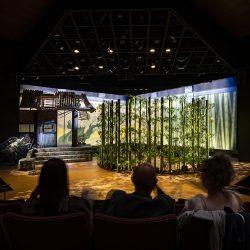Quick Takes: Fall 2014
Established in June with a $25 million grant from the Grainger Foundation, the Grainger Institute for Engineering is a trans-disciplinary research incubator that will initially focus on projects related to materials and manufacturing. The institute will hire twenty-five new faculty members and launch several graduate research centers.
Dissatisfied with the quality of Braille music sheets, School of Music grad student Yeaji Kim PhDx’15 has developed a three-dimensional score format to help visually impaired musicians “see” notation that includes as much compositional nuance and detail as do traditional scores.
The Veteran Services and Military Assistance Center opened in May to improve the student-veteran experience on campus by developing new programs and streamlining administrative processes.
An international team led by pathobiological sciences professor Yoshihiro Kawaoka has found that current avian influenza viruses contain the same genetic materials as the flu that caused the 1918 pandemic. Their findings could help predict the likelihood of an emerging strain of pandemic flu and devise strategies for countering pathogens.
After two years of renovations, the Wisconsin Union Theater reopened to host a jazz concert in June. This is the first significant renovation of the theater, now known as Shannon Hall, since it first opened in the Memorial Union in 1939.
The UW has selected Ben Miller as its new director of federal relations. Based in Washington, D.C., he will maintain relationships with Wisconsin’s congressional delegates and bolster partnerships with federal agencies and other higher education and scientific organizations with offices in the nation’s capital.
Four electric “micro-cars” are coming to campus as part of a sustainability research initiative spearheaded by computer sciences professor Suman Banerjee. The UW is one of four institutions selected to receive Innova Dash vehicles, which are equipped with tools to help researchers study how they perform.
Published in the Fall 2014 issue






Comments
No comments posted yet.